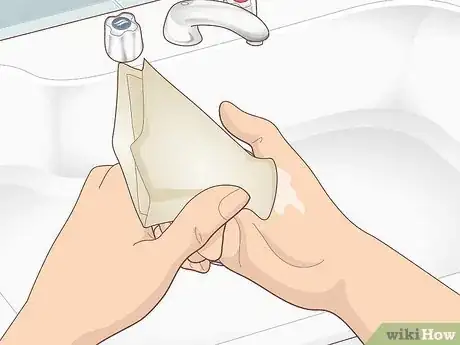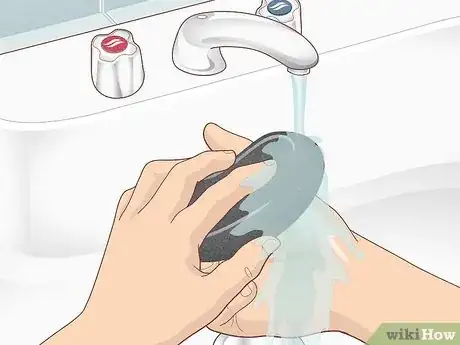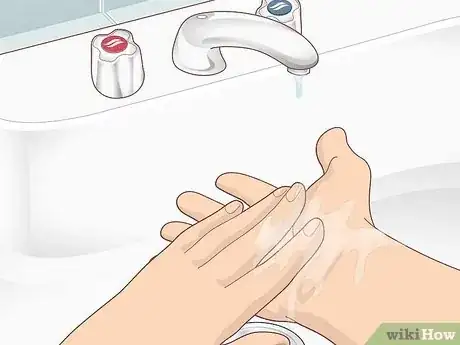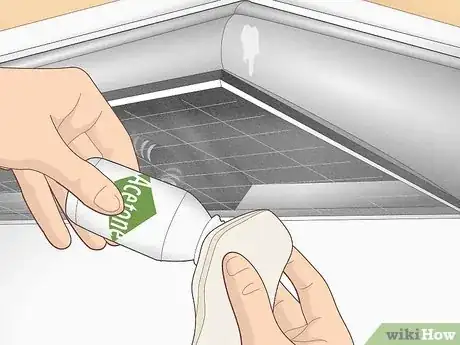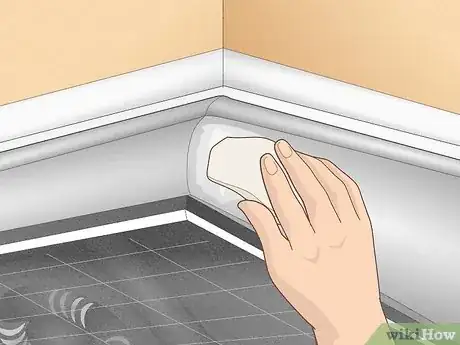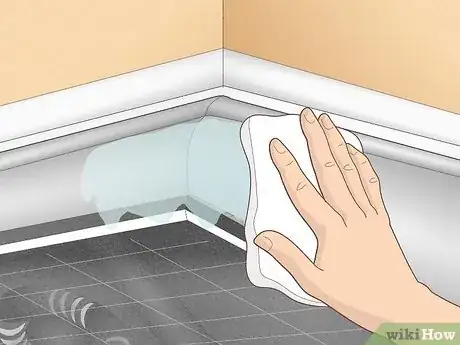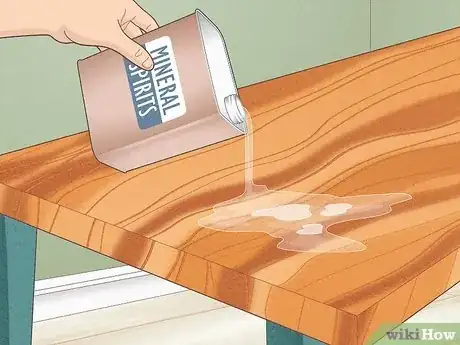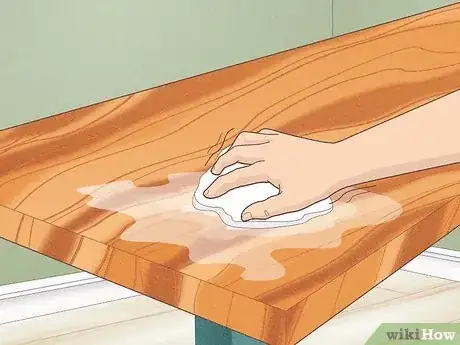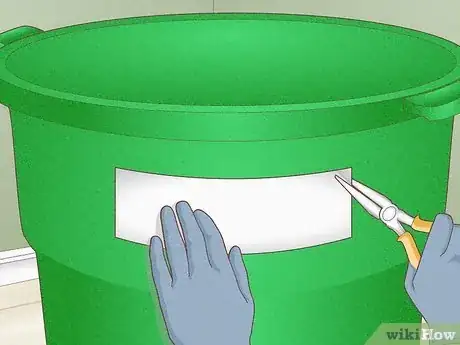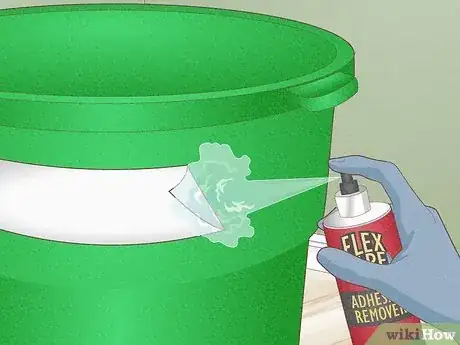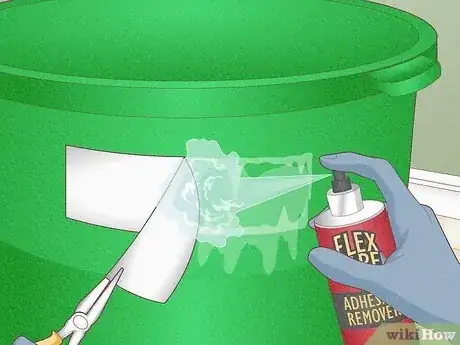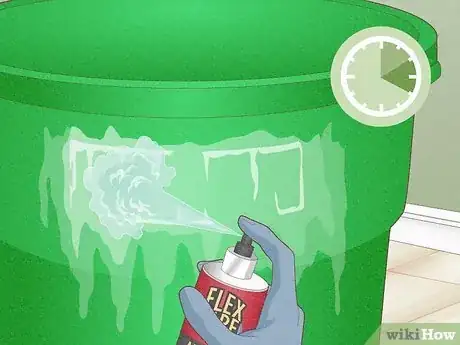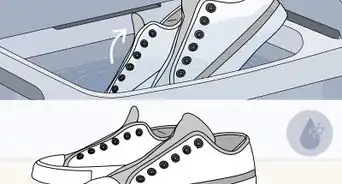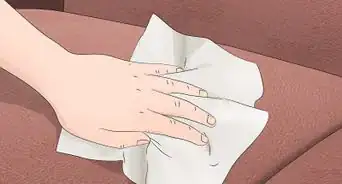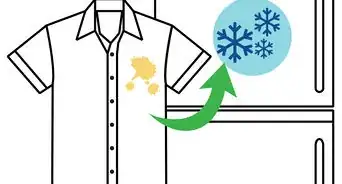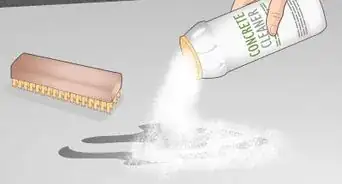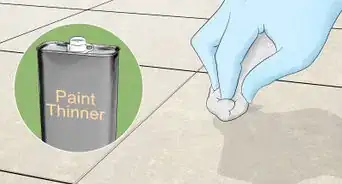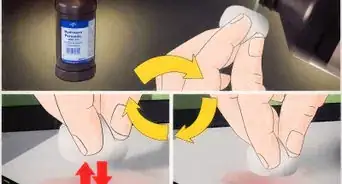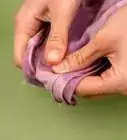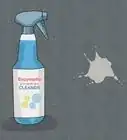This article was co-authored by wikiHow staff writer, Eric McClure. Eric McClure is an editing fellow at wikiHow where he has been editing, researching, and creating content since 2019. A former educator and poet, his work has appeared in Carcinogenic Poetry, Shot Glass Journal, Prairie Margins, and The Rusty Nail. His digital chapbook, The Internet, was also published in TL;DR Magazine. He was the winner of the Paul Carroll award for outstanding achievement in creative writing in 2014, and he was a featured reader at the Poetry Foundation’s Open Door Reading Series in 2015. Eric holds a BA in English from the University of Illinois at Chicago, and an MEd in secondary education from DePaul University.
This article has been viewed 3,548 times.
Learn more...
Flex Seal is an awesome and versatile product, but it’s big selling point—the fact that its adhesive bond is so powerful—can be a huge downside if it gets somewhere it doesn’t belong. Luckily, it’s a lot easier to remove Flex Seal than you’re probably imagining. Your success does rely on using the proper tools and ingredients, though! That’s where we step in. We’ll break down what you need to remove Flex Seal regardless of whether you’ve got it on your skin, metal, clothing, wood, and more. Just FYI, these solutions apply to liquid Flex Seal and the stuff that comes in a spray can; jump to the last section here for help with Flex Seal tape.
Things You Should Know
- Get Flex Seal off of your skin using bar soap. If the seal has cured, you may need to soak your hands in warm water to soften it up.
- Use acetone to get Flex Seal off of metal. For car exteriors, use toluene instead.
- Soak the Flex Seal in mineral spirits and scrub repeatedly if you got the Flex Seal on wood or cloth.
- Remove Flex Tape using pliers, Flex Seal remover, and a whole lot of elbow grease.
Steps
Skin
-
1Wipe wet Flex Seal off with paper towel. As soon as you get Flex Seal on your skin, grab a paper towel or rag and wipe off as much as you can. Flex Seal begins curing as soon as it’s exposed to the air, so don’t take your time here.[1]
- This applies to both liquid flex seal and the spray can stuff. The only unique product removal is the tape.
-
2Soak your hands in warm water for 15 minutes or so. If the Flex Seal has partially cured or you have some residue left on your hands, soften the Flex Seal up by soaking your hands in a bowl or holding them under the sink. Then, try wiping the Flex Seal off with a paper towel.[2]
- Flex Seal is waterproof, but only after it has cured 100%. That takes 24 hours, so until then, water is your friend.
Advertisement -
3Rub any dried Flex Seal with bar soap and water. If you’ve still got Flex Seal on your skin, grab a bar of soap and start scrubbing up. Use warm water, scrub back and forth over the area, and wear the Flex Seal down.[3]
- Soap with ground pumice, coffee grounds, activated charcoal, sea salt, or jojoba beads in it is going to be a lot more effective than regular unscented stuff.
- If bar soap doesn’t work, try using coconut oil or dish soap with orange in it.
-
4Continue washing your hands until the Flex Seal is gone. Flex Seal can be exceptionally stubborn, but you will get it off eventually. Try using different soaps to see if that helps. Keep at it and continue to wash your skin under warm water until your skin is clean.[4]
- In the future, always wear rubber gloves when you’re working Flex Seal.
- If you have any questions in the future, call Flex Seal’s customer service at (833) 411-3539.
Metal
-
1Soak a damp rag in water and acetone unless you’re working on a car. If the metal is painted, spot test the acetone in an innocuous area before proceeding to confirm it won’t damage anything. Take a clean rage and run it under warm water. Wring the excess water out and then pour a spoonful of acetone on to the cloth.[5]
- For cars specifically: Follow these instructions, but use toluene instead of acetone, which will almost certainly strip your vehicle’s paint job.
- Some people have had success getting Flex Seal off of cars with WD-40 or Goo Gone. You can try using one of these products instead of toluene.
- Just FYI, acetone is the same thing as nail polish remover.
-
2Scrub the surface with your rag. Drag the acetone-soaked section of the rag back and forth along the metal. If the Flex Seal hasn’t had time to cure, it should lift off of the metal pretty quickly. If it has cured, you may have to use a fair bit of elbow grease.[6]
- Reload the cloth with more water and acetone if you feel like your rag starts to lose its efficacy.
-
3Wash and dry the surface when you’re done. Once the Flex Seal is off, rinse the acetone off with water. You can hose the surface down if you got the Flex Seal on a surface you can douse in water, or load a cloth with water and spot clean the surface. Dry the metal with a dry cloth when you’re done.[7]
Fabric/Wood
-
1Pour mineral spirits over the flex seal. If you’ve got Flex Seal liquid or spray on clothing, carpet, fabric, or wood, mineral spirits are the safest and most efficient way to remove it. Pour mineral spirits directly over the Flex Seal.[8]
-
2Scrub the area with a clean rag or cloth. Work the mineral spirits into the cloth or wood using a clean rag, paper towel, or cloth. The Flex Seal should come up relatively quickly. If it doesn’t, continue to work the spirits into the surface.[9]
- With clothing specifically, if the Flex Seal has fully cured, you’re going to have an extremely difficult time getting it clean. It may take multiple rounds of scrubbing to get the Flex Seal up.
- Depending on how long the Flex Seal has been allowed to dry, you may not be able to remove it entirely from your clothes. If you can’t get it out after multiple attempts, try dry cleaning instead.
-
3Wash, rinse, and dry the fabric or wood when you’re done. If the Flex Seal was on clothing, you can launder it like normal. Alternatively, you can just run the item under water to wash the mineral spirits out. For wood, just keep the area well-ventilated and soak up as much liquid as you can.[10]
Flex Seal Tape
-
1Peel up a corner of the tape with pliers. Put on a pair of gloves to keep your hands clean. Grab a razor blade or chisel and scrape up a corner of the tape. Once you have an edge up, grab some pliers and grip the tape firmly. Brace the item or surface you’re removing the tape from and then pull firmly with the pliers to get as much of the tape up as you can.[11]
- Flex Seal tape is extremely difficult to remove once you’ve applied it to a surface. This is going to take a fair bit of effort. You’ll 100% be able to get the tape up with enough elbow grease, though.
-
2Spray Flex Seal’s adhesive remover on the back of the tape. Flex Seal manufactures an adhesive remover designed specifically to get Flex tape off of a surface. Use that to spray the backside of the corner you’ve pried up. Wait a few seconds for the removal spray to soak into the exposed edge.[12]
- You can try using Goo Gone or WD-40 in a pinch, but it’s unclear just how efficient these methods are.
-
3Continue peeling and spraying the remover. Progress may be slow, but you will eventually get the tape off. Peel up as much tape as you can with your pliers, spray the adhesive remover, wait a few seconds, and repeat. Eventually, you’ll get the tape completely off of the surface.[13]
- Take breaks as needed. Depending on the size of the tape strip, this may take a while.
-
4Soak the surface in remover for 10-20 seconds to remove residue. Once you finally get the tape off, it’ll likely leave a tough gunk behind. Spray a liberal amount of the Flex Seal remover on the residue and wait a little to let the remover erode it. Wipe the surface clean and rinse the area with water to make your item good as new.[14]
- You can use a chisel to scrape away any especially thick globs of residue as well.
References
- ↑ https://images.homedepot-static.com/catalog/pdfImages/38/382284fb-5878-469f-89eb-f6c7787db5a2.pdf
- ↑ https://flexsealproducts.com/blogs/how-to/how-to-remove-flex-seal-liquid-from-hands
- ↑ https://flexsealproducts.com/blogs/how-to/how-to-remove-flex-seal-liquid-from-hands
- ↑ https://flexsealproducts.com/blogs/how-to/how-to-remove-flex-seal-liquid-from-hands
- ↑ https://www.interviewarea.com/frequently-asked-questions/will-goo-gone-remove-flex-seal
- ↑ https://images.homedepot-static.com/catalog/pdfImages/38/382284fb-5878-469f-89eb-f6c7787db5a2.pdf
- ↑ https://www.interviewarea.com/frequently-asked-questions/will-goo-gone-remove-flex-seal
- ↑ https://images.homedepot-static.com/catalog/pdfImages/38/382284fb-5878-469f-89eb-f6c7787db5a2.pdf
- ↑ https://images.homedepot-static.com/catalog/pdfImages/38/382284fb-5878-469f-89eb-f6c7787db5a2.pdf
